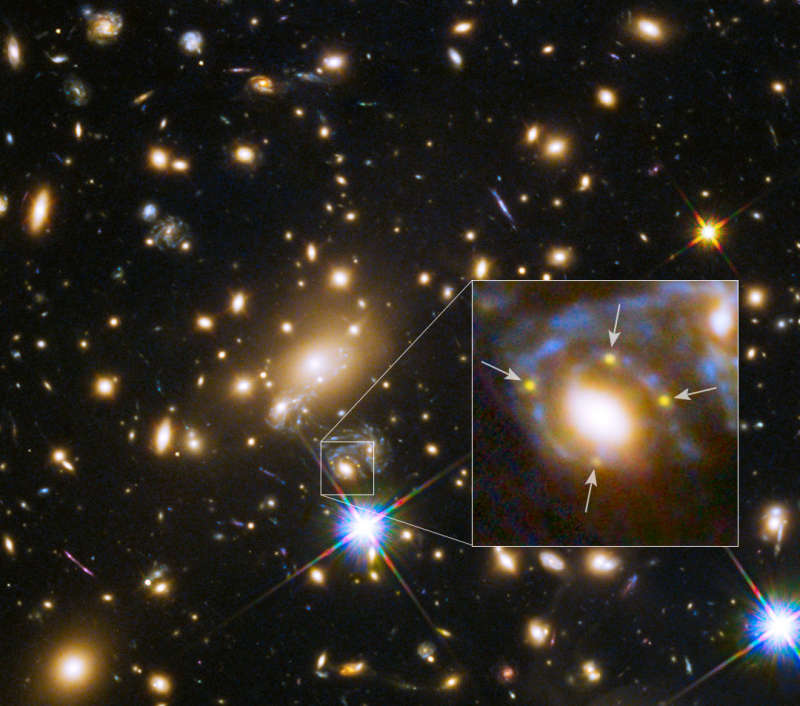Credit & Copyright: NASA,
ESA, and
S. Rodney
(JHU) and the FrontierSN team;
T. Treu
(UCLA),
P. Kelly (UC Berkeley), and the GLASS team;
J. Lotz (STScI) and the
Frontier Fields team;
M. Postman
(STScI) and the
CLASH team; and
Z. Levay
(STScI)
Explanation:
What are the unusual spots surrounding that galaxy?
They are all images of the same supernova.
For the first time, a single supernova explosion has been
seen split into
multiple images by the
gravitational lens deflections of intervening masses.
In this case the masses are a large galaxy and its home
galaxy cluster.
The featured image was captured last November by the Earth-orbiting
Hubble Space Telescope.
The yellow-hued
quadruply-imaged Supernova
Refsdal
occurred in the early universe far behind the cluster.
Measuring the locations and time-delays between the
supernova images
should allow astrophysicists to
recover
the amount of
dark matter
in the galaxy and cluster.
With patience and
luck, a fifth image of the
supernova
will also be recovered
nearby in the next few years.
Astrophysicists:
Browse 1,000+ codes in the Astrophysics Source Code Library
1999 2000 2001 2002 2003 2004 2005 2006 2007 2008 2009 2010 2011 2012 2013 2014 2015 2016 2017 2018 2019 2020 2021 2022 2023 2024 2025 |
Yanvar' Fevral' Mart Aprel' Mai Iyun' Iyul' Avgust Sentyabr' Oktyabr' Noyabr' Dekabr' |
NASA Web Site Statements, Warnings, and Disclaimers
NASA Official: Jay Norris. Specific rights apply.
A service of: LHEA at NASA / GSFC
& Michigan Tech. U.
|
Publikacii s klyuchevymi slovami:
supernova - gravitational lens - galaxy cluster - Sverhnovye - gravitacionnoe linzirovanie
Publikacii so slovami: supernova - gravitational lens - galaxy cluster - Sverhnovye - gravitacionnoe linzirovanie | |
Sm. takzhe:
Vse publikacii na tu zhe temu >> | |
Mneniya chitatelei [21]
